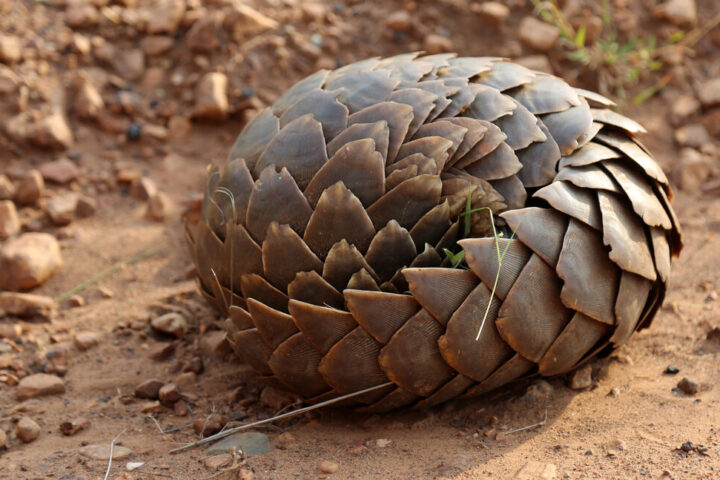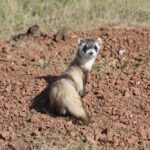On November 26, 2024, Wisdom, a female Laysan albatross (Phoebastria immutabilis) laid an egg at Midway Atoll National Wildlife Refuge. At approximately 74 years old, this event marks her first breeding attempt since 2020 and adds to her documented record as the oldest known wild bird.
First banded by ornithologist Chandler Robbins in 1956 on Kuaihelani (Midway Atoll), Wisdom has surpassed typical Laysan albatross longevity by several decades. While most members of her species live 12–40 years, with some reaching 68, Wisdom continues active breeding well beyond documented norms. Supervisory wildlife biologist Jonathan Plissner notes that the second-oldest known albatross reached only 45 years.
The 2024 breeding season brought changes to Wisdom’s life history. Her previous mate Akeakamai, who shared parental duties from 2006 onwards, hasn’t been observed in recent years. Upon her return to Midway Atoll, Wisdom formed a pair bond with a new male partner – an adaptation that challenges the traditional understanding of albatross monogamy. “We are optimistic that the egg will hatch,” Plissner stated in the U.S. Fish and Wildlife Service announcement.
Throughout her lifetime, Wisdom has produced an estimated 50–60 eggs and successfully raised approximately 30 chicks. Photographer Dan Rapp documented her recent nesting activities, capturing moments of pair bonding and the first incubation shift exchange between Wisdom and her new mate. The incubation period spans roughly 7 months, followed by 5–6 months of chick development before fledging.
Midway Atoll, known to Native Hawaiians as Pihemanu (loud din of birds), hosts the world’s largest albatross colony. Current population assessments indicate declining trends among Pacific seabird species, primarily due to marine plastic pollution, commercial fishing impacts, and climate-driven changes in ocean productivity. Laysan albatross populations face particular challenges from plastic ingestion – studies show 97.5% of chicks contain plastic debris, averaging 45.8 grams per bird.

Wisdom’s reproductive capability at 74 provides unprecedented data for avian biologists studying seabird longevity and breeding patterns. Her flights between nesting seasons have covered an estimated three million miles, equivalent to six round trips to the moon. Each foraging trip during the breeding season can span thousands of miles as albatrosses search for squid and fish eggs in the North Pacific.
The monitoring program at Midway Atoll maintains detailed records of 19 seabird species. Banding data collected since the 1930s has revolutionized the understanding of pelagic bird movements and life histories. Wisdom’s band number, Z333, represents one of the millions in the database tracking long-term population dynamics.

Recent changes in ocean temperatures and chemistry affect the entire North Pacific ecosystem where Laysan albatrosses feed. Conservation efforts focus on reducing fishery bycatch mortality, controlling invasive species at breeding sites, and addressing marine debris accumulation. The U.S. Fish and Wildlife Service coordinates with international partners to protect critical habitat across the species’ range.
Wisdom’s return to Midway Atoll each breeding season provides opportunities for researchers to gather vital data about aging in wild birds. Her continued reproductive success challenges previous assumptions about senescence in long-lived seabirds and contributes to understanding factors affecting population stability in marine ecosystems.
Marine biologists tracking albatross populations have documented specific physiological adaptations that may contribute to Wisdom’s longevity. Laysan albatrosses possess exceptional DNA repair mechanisms and telomere maintenance systems – cellular features typically associated with extended lifespans. Research indicates their metabolic efficiency during long-distance flights may reduce oxidative stress, a key factor in aging.

The breeding cycle at Midway Atoll follows precise temporal patterns. Dan Rapp’s photographic documentation shows Wisdom arrived at her traditional nesting site on November 26, 2024. According to U.S. Fish and Wildlife Service data, successful egg-laying occurred within 24 hours of arrival – timing that aligns with optimal incubation periods for the species. The male partner assumes first incubation duty while females recover energy reserves depleted by egg production.
Feeding ecology studies reveal Laysan albatrosses concentrate foraging efforts along productivity zones in the North Pacific. Satellite tracking data shows individuals may cover 15,000 kilometers in a single foraging trip. Wisdom’s accumulated flight distance exceeds three million miles, based on conservative estimates of annual movement patterns. GPS tracking indicates precise return navigation to nesting sites, with birds typically landing within meters of previous years’ nest locations.

The Midway Atoll breeding colony supports approximately 70% of the global Laysan albatross population. Current census data indicates:
- Total breeding pairs: 750,000
- Annual chick production: 400,000-450,000
- Colony site fidelity: 97%
- Adult annual survival rate: 94%
- First-year survival rate: 81%
More Stories
Collaborative research between USFWS and Pacific Rim universities focuses on contaminant loads in breeding adults. Blood samples from nesting birds show concerning levels of persistent organic pollutants, with age-related bioaccumulation evident in older individuals. Environmental toxicology studies suggest potential impacts on egg viability and chick development.
Climate change presents emerging challenges. Sea surface temperature anomalies affect prey distribution patterns, requiring birds to expand foraging ranges. Storm intensity threatens nesting success – 2023 surveys documented a 14% nest failure rate during severe weather events. Rising sea levels may impact available nesting habitat on low-lying atolls.

Conservation initiatives prioritize several key areas:
- Expansion of protected marine zones
- International fishing fleet observer programs
- Removal of invasive predators from breeding sites
- Habitat restoration projects
- Marine debris reduction strategies
The Friends of Midway Atoll National Wildlife Refuge maintains ongoing monitoring of Wisdom’s nesting attempt. Regular updates track incubation exchanges between partners, egg development, and potential threats to nest success. This data contributes to a broader understanding of reproductive success in aged seabirds.


















